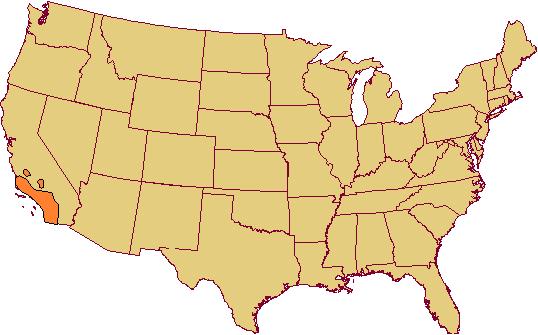

The California chapparal type is characterized by shrubby species with broad, sclerophyllous leaves. Located in southern California in low mountains, it occurs at elevation from 0 to 1000 meters.
Climate. The climate is characterized by winter precipitation and a long, dry summer. The frost-free season is from 200 to 300 days, with coastal areas having an essentially frost-free season. Precipitation varies from 25 to 75 centimeters, and is 20 to 40% of evaporation potential.
Soils. Mollisols, alfisols, and entisols all occur in the region. Mollisols are restricted to the steep slopes, high in base content, and lack accumulations of clay. The entisols are low in organic matter and lack depth. The alfisols have clay accumulations and sometimes a carbonate-cemented horizon.
Vegetation. The most common species in the chapparal type are chamise (Adenostema fasciculatum), manzanitas (Arctostaphylos), ceanothus (Ceanothus), and liveoaks (Quercus). Shrub cover varies with elevation. Higher elevation are characterized by dense thicket-like growth, but at lower elevation the shrub are in an open stand and evenly distributed. Some fescue, brome, and needlegrass species are found in open areas.
Management. Some grazing occurs in the natural chapparal, but conversion of the area to grassland by prescribed burning and seeding is usually necessary. Chapparal species sprout vigorously following fire and perpetuate themselves at the expense of other species. The open southern areas are grazed more than the dense northern areas. Deer occur in high numbers, particularly where openings have been created by fire, chemical, or mechanical means. Removal of the shrubby species without replacement by grasses leads to extensive and destructive erosion. The chapparal is a major watershed for irrigation and domestic water supplies.